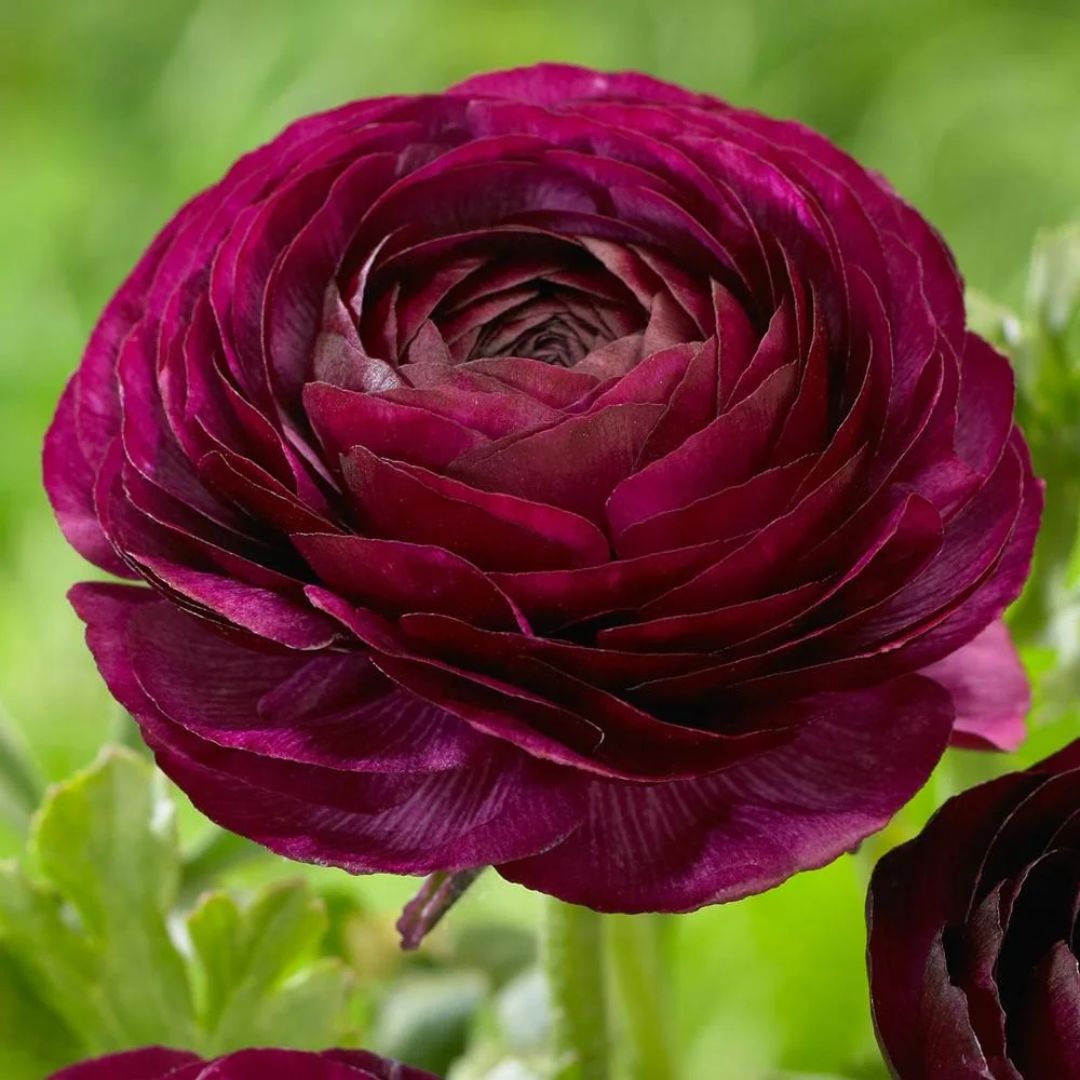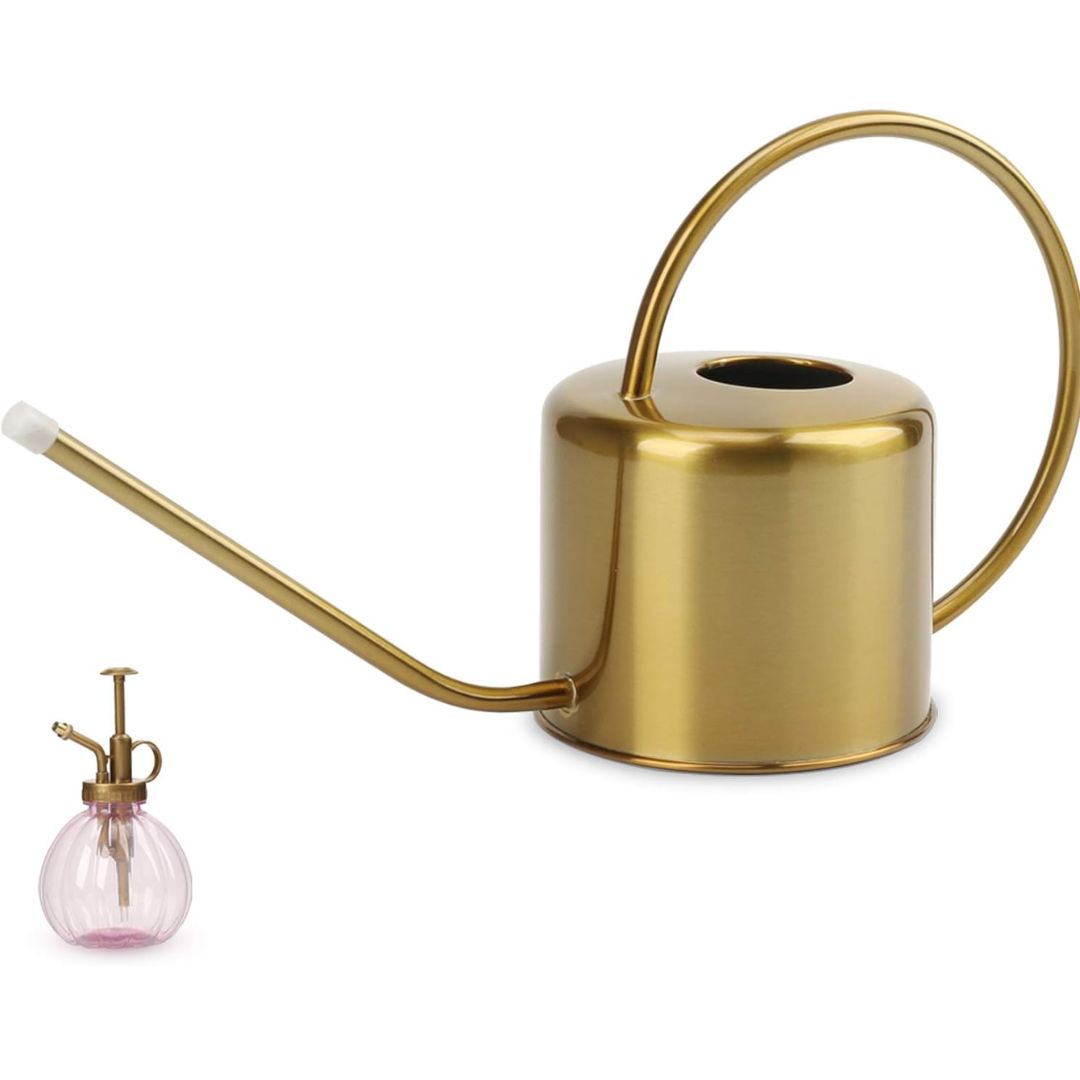How to Grow Ranunculus Indoors — And Fill Your Home With These Pretty, Sun-Loving Flowers
Growing ranunculus indoors is not as hard as you might think, but there are a few steps you'll need to follow to get the most out of your blooms
Faiza Saqib
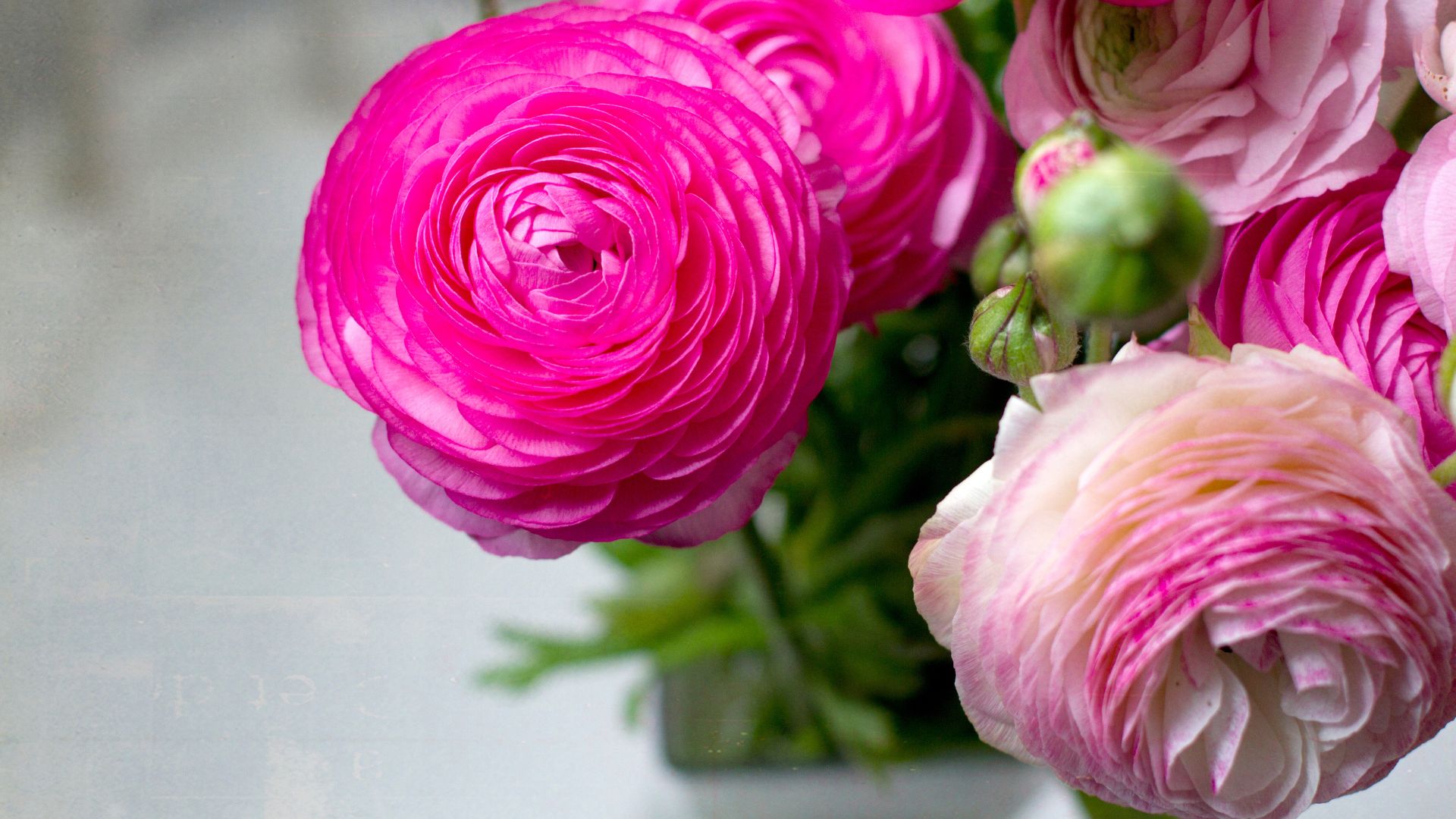
Ravishing, radiant and rich in color — ranunculus are a must-have if you're looking to spruce up your home with a cottage-core feel. Known to be the perfect bloom for floral arrangements, these perennials come in an array of colors including red, purple, white, yellow and orange — and will certainly brighten up your space if you welcome them indoors.
Spread through different parts of the world, the ranunculus flower is one that has become quite popular over the years, and rightly so. "We’re now noticing more cottage style flowers making their way back into gardens and homes," says Florist Hattie Shackleton from Honour Farm Folk. "For growers like myself, the ranunculus – much like tulips and the narcissus family – represent hope and promise for the high season ahead".
If you're looking for another indoor garden idea, growing ranunculus indoors is a great choice — here's everything you need to know...
How to grow ranunculus indoors
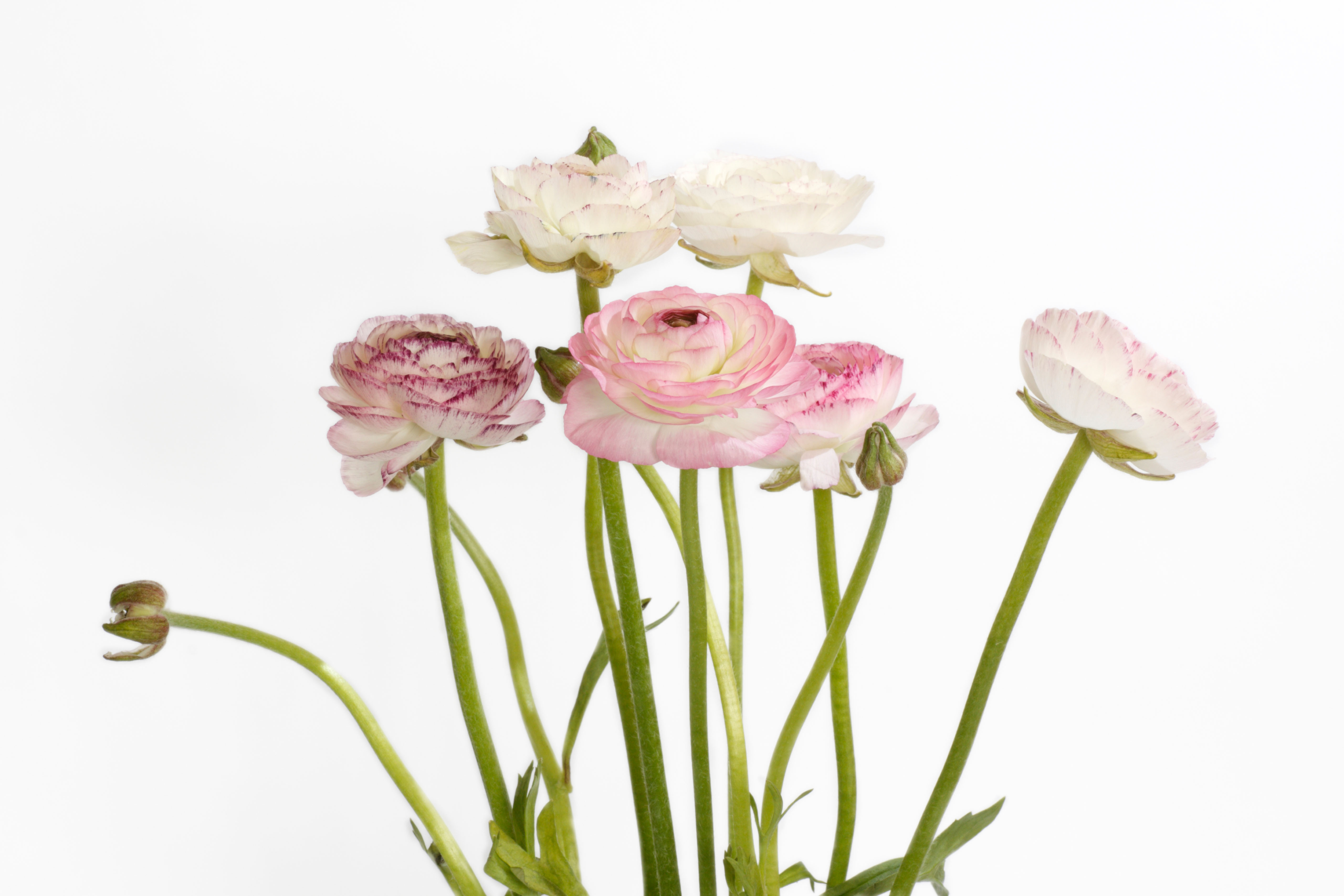
When to plant
These full sun perennials are truly a show-stopper and will make quite the impression indoors, but you'll need to plant them at the right time to get the best of out of these beauties.
If you're living in USDA zones 7-10, ensure you plant corms in the fall for a late winter or early spring bloom.
For zones 4-6, ensure you plant pre-sprouted corms in the spring.
What You'll Need
You'll need a few gardening tools to grow these delightful blooms — this includes:
The Livingetc newsletters are your inside source for what’s shaping interiors now - and what’s next. Discover trend forecasts, smart style ideas, and curated shopping inspiration that brings design to life. Subscribe today and stay ahead of the curve.
• Corms
• An area with direct sun
• Water
• Plant pot
• Well-drained soil
1. Pre-sprout corms
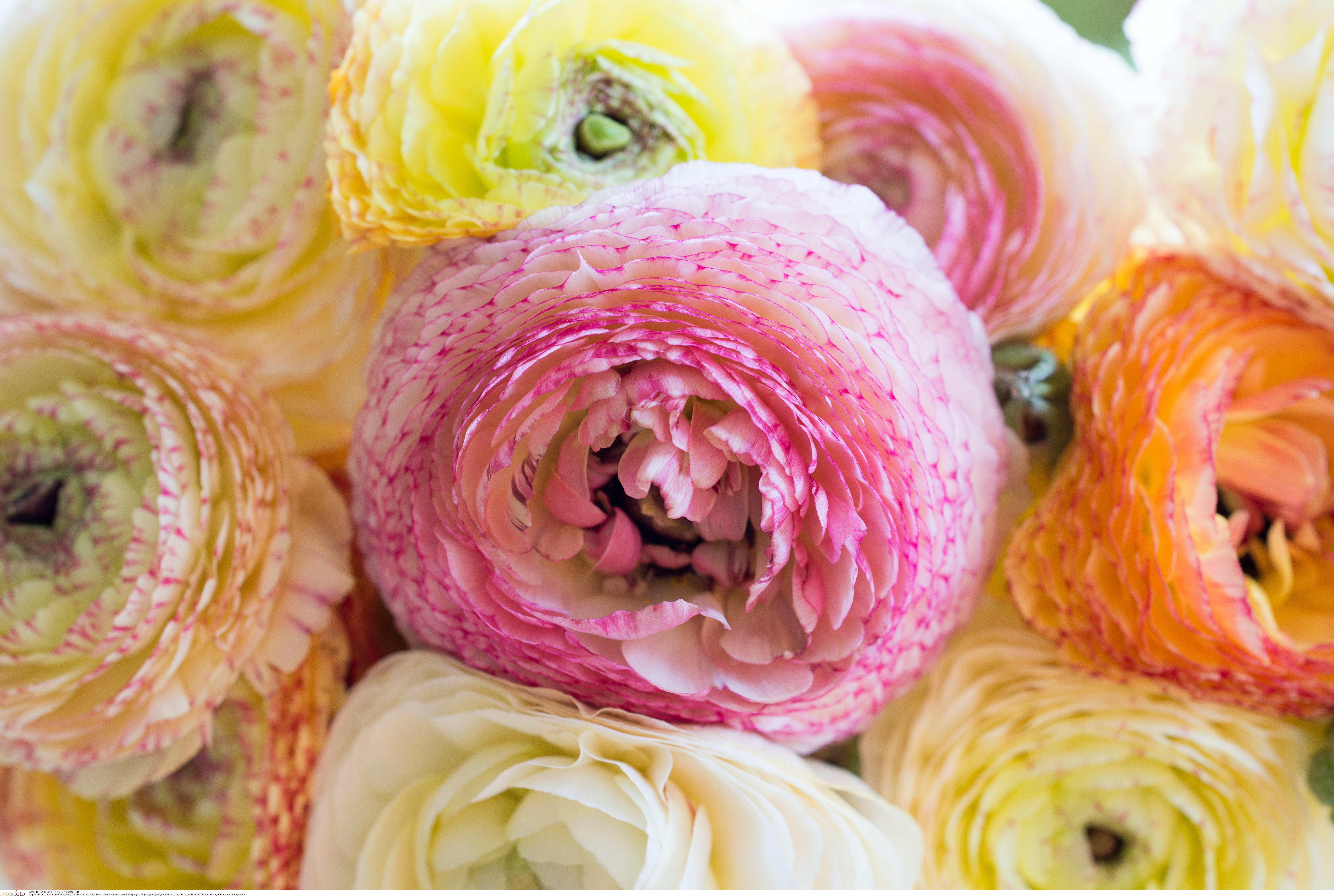
First up, to encourage the growth and health of bare root plants and get your ranunculus off to a flying start, its "corms" (a fleshy, underground root) can be pre-sprouted in shallow trays of soil before being planted into pots in late autumn for spring flowering, or in late winter for summer blooms.
To do this, all you need to do is remove your corms from its packet and start by soaking them. Do this for 4 hours or more and ensure you change the water every hour or so.
As for choosing the right variety for indoors, florist Hattie Shackleton from Honour Farm Folk. tells us: "Typically, I grow varieties that will perform well as cut flowers and provide me with long stem length for arrangements."
"However, a variety which is perfect for indoor growers is the ‘Tomer Mix’ (dwarf buttercups). They come in a variety of colors and are lovely and compact, which makes for a striking and playful arrangement when clustered together in pots."
2. Find the right container
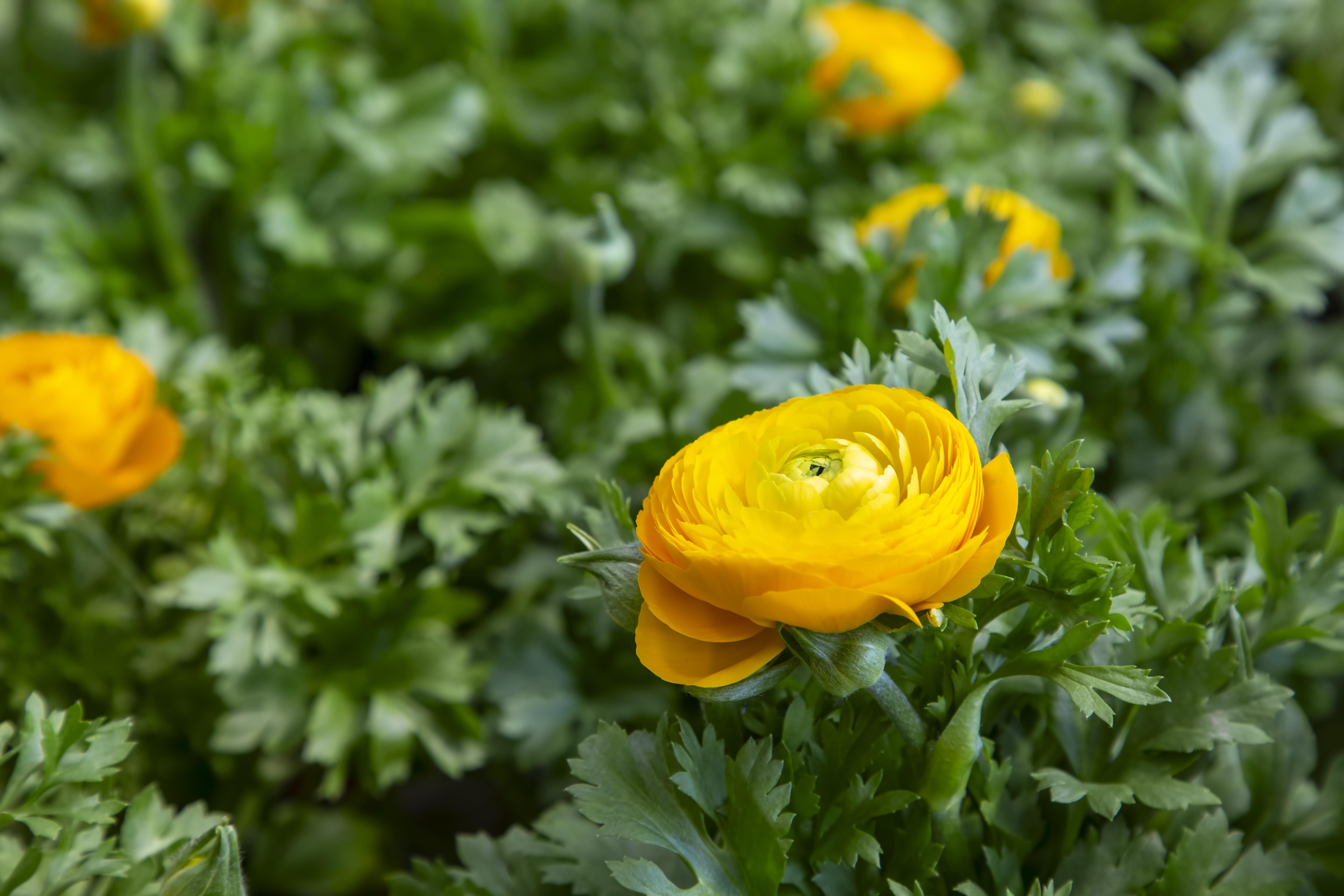
Next up, you'll need to find the right pot to start your container gardening journey. Your blooms will need a home to grow in and if you are hoping to add these flowers to your indoor garden, why not opt for a container that goes with your home's decor?
These flowers look rather charming planted in a clutch of ramshackle terracotta pots or tumbled together in an elegant delftware bowl or giant clam shell planter, though ranunculus are sensitive to overwatering, so when grown indoors, good drainage is essential.
Once you've found the pot of your choice, plant your corm about one to two inches deep and space them around three to four inches apart in the soil. Place the claw-looking side of the corms downwards when planting. After adding it into the soil, ensure you water it well and keep it in a cool, dry place.
Hattie tells us: "A good quality multi-purpose compost will supply all the nutrients the plant needs, while a handful of horticultural grit will allow excess water to drain away".
3. Plant in a spot with lots of sunlight
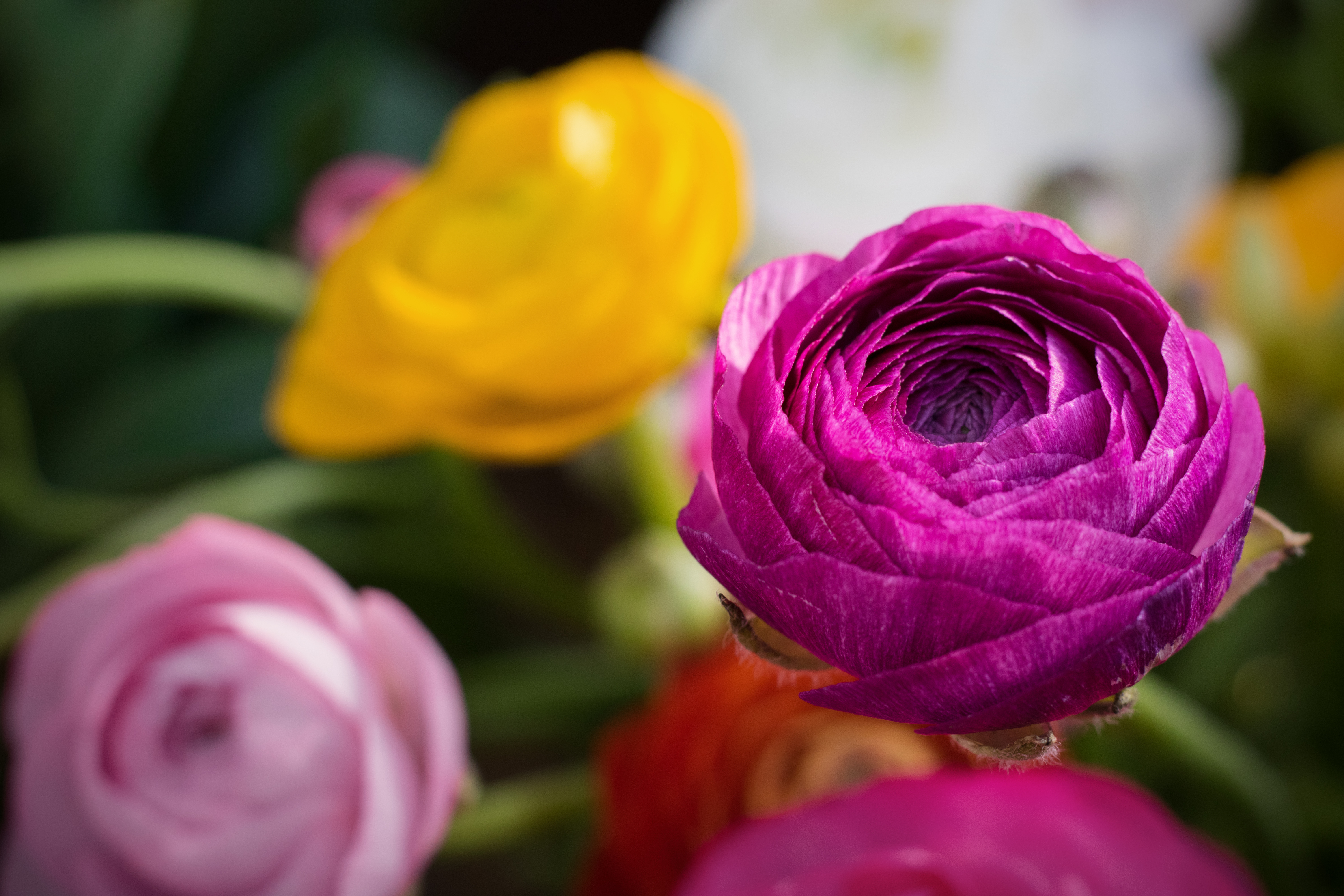
Now that you've planted your beautiful houseplant into its soil, remember to give it some well deserved light. Your shrub will find a lot of happiness under the sun and with ranunculus, they will need at least 6 hours of direct sun daily. If your corms don't get enough sun, it will result in fewer blooms.
A light-drenched windowsill, or basking spot on the breakfast table, will help them reach their full potential and pots can luckily be moved accordingly.
Just be careful not to allow your pot to entirely dry out. Potted ranunculus can dry out easily, thanks to their fleshy, tuberous roots, so a good rule of thumb is to water weekly or whenever the soil feels dry just beneath the surface.
4. Keep an eye out for pests

As your bloom continues to grow you'll want to keep an eye on it. Monitor its health and check for any damage, illness or pest infestations.
"Ranunculus attract a number of pests such as aphids who feed on young growth quite mercilessly," warns Hattie. "This can be rectified by close inspection of the plants on a daily basis when they’re taking off and a simple soapy water solution in a recycled spray bottle on infected areas."
Like many tuberous plants, ranunculus are also prone to root rot which can prove problematic in waterlogged garden areas and overwatered pots with poor drainage. After watering, be sure to regularly tip out any excess water that has collected in the saucer underneath and if you plan to revive your ranunculus next year, gradually reduce watering as the summer progresses, so the corms have time to dry out before they become dormant.
FAQS
Can I prune Ranunculus?
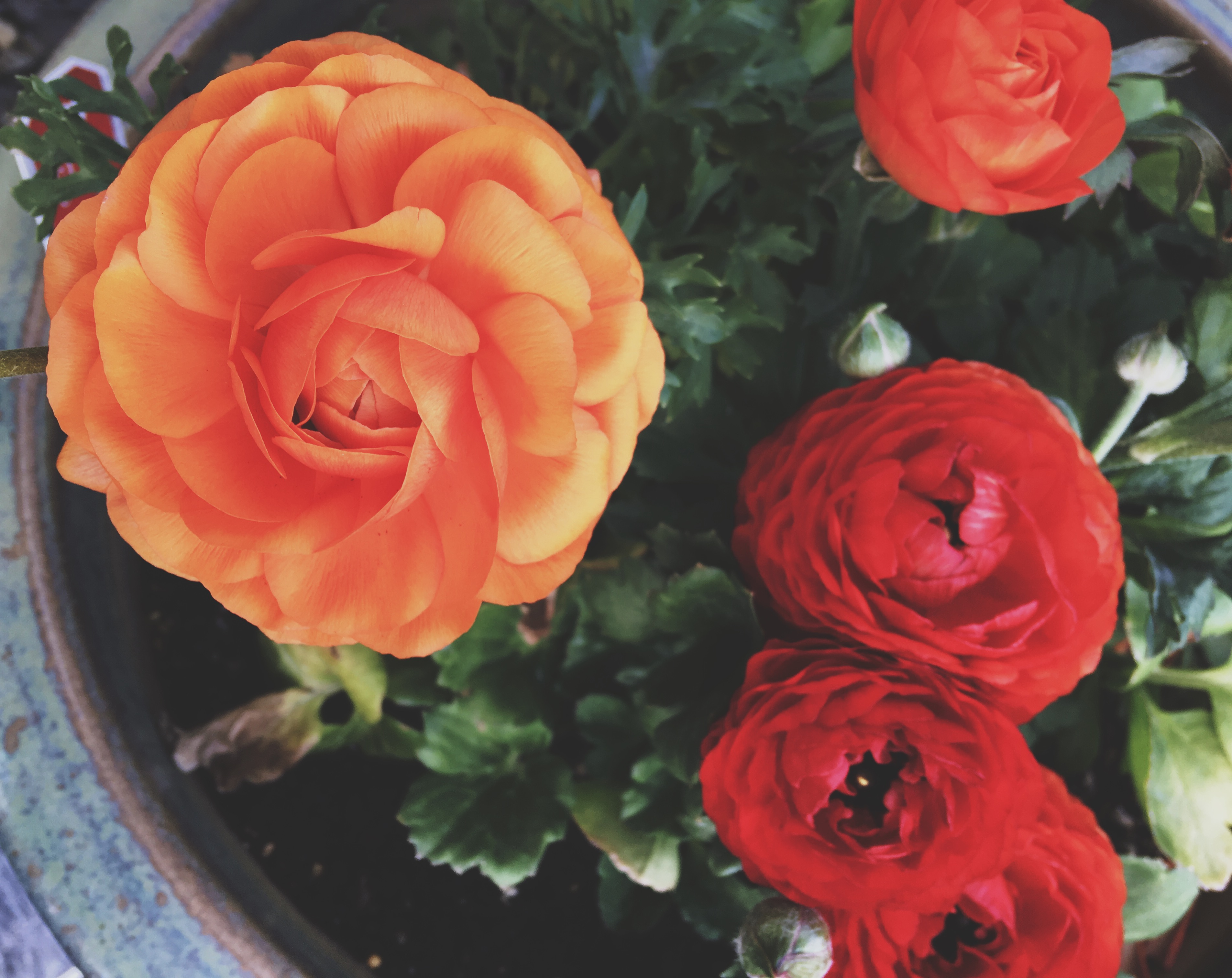
Yes, you can prune ranunculus when it's needed, but they require no pruning during growing season.
If you're looking to deadhead your blooms once its leafy greens turn yellow, ensure you use the right pruning tools for it. Classic pruning shears should do the job!
Catriona Day is a freelance lifestyle and interiors writer, working both agency side and in-house to help brands find their voice. Stints at two independent estate agents who specialise in selling architecturally-inspired dream homes only fuelled her fervour for seeing how different people live (read: nosy). She has a lot to say on pretty much any subject homes-related and will talk with wild abandon on the topic of movie-related interiors until the subject is firmly changed. Her obsession with sourcing Portuguese pottery and rehoming unwanted lamps remains unchecked, much to the despair of her husband.
- Faiza SaqibRenovation Editor
